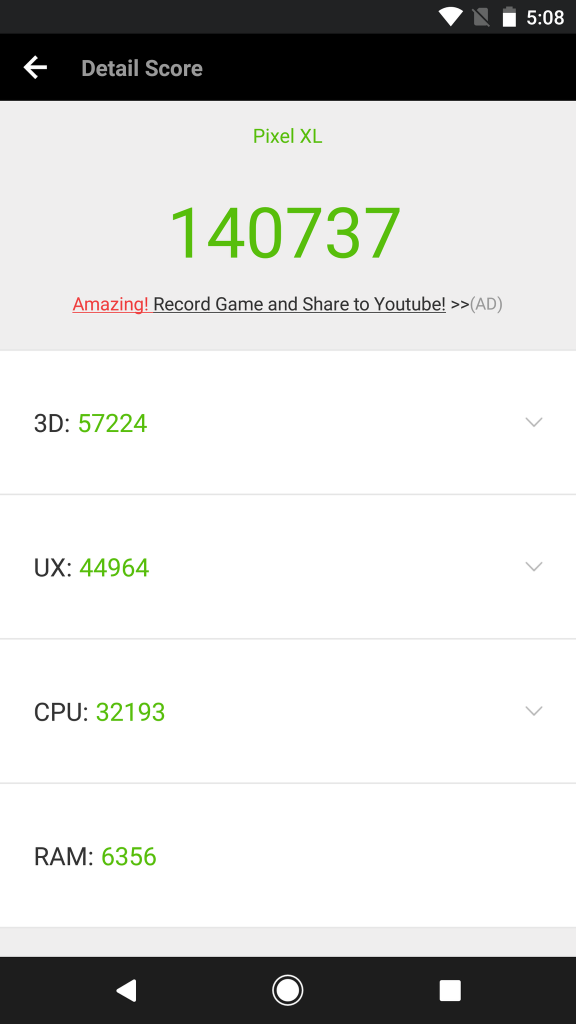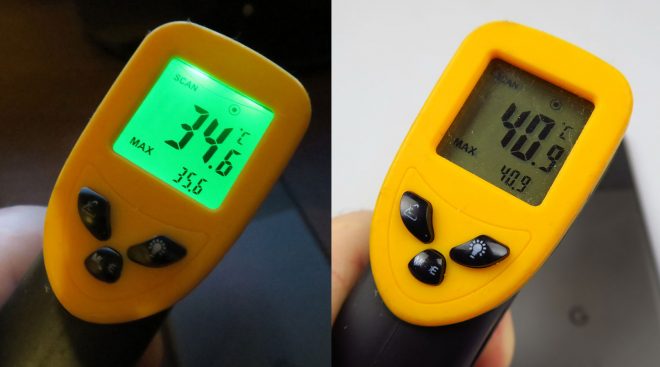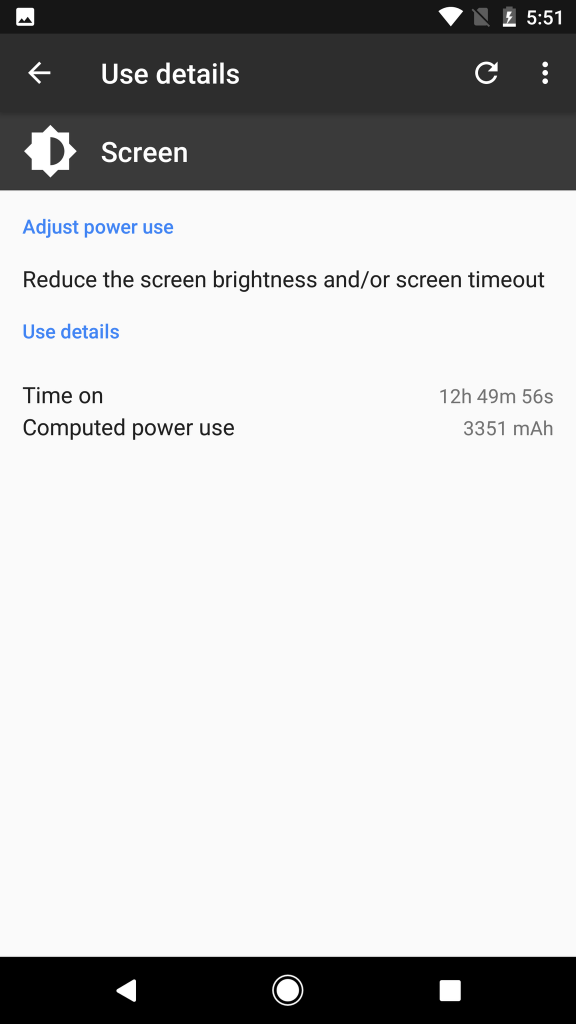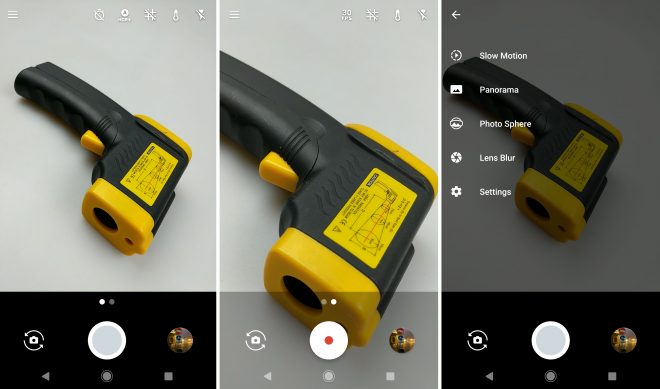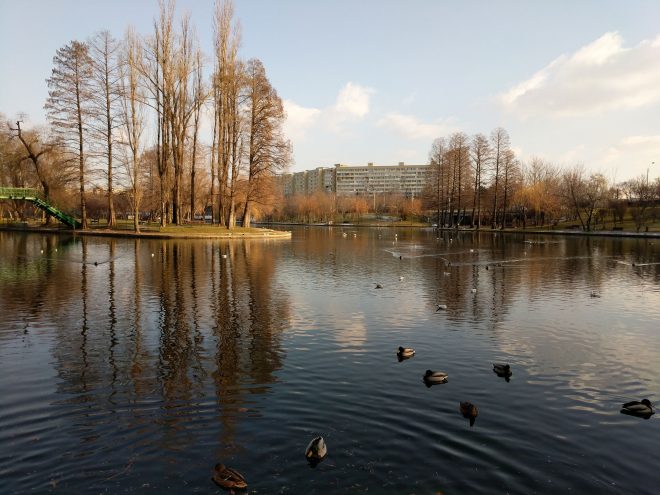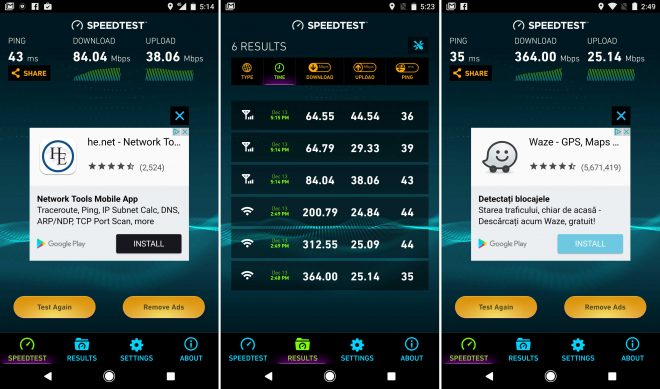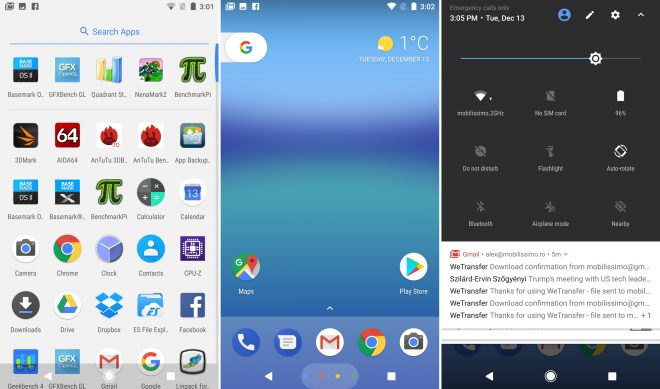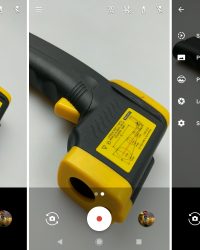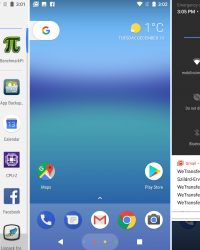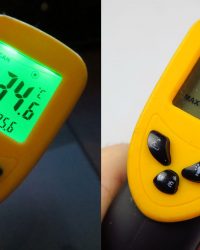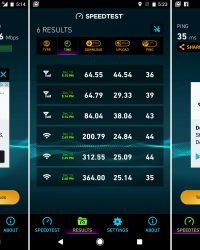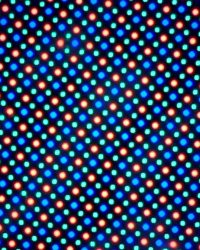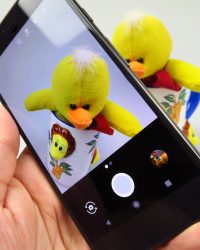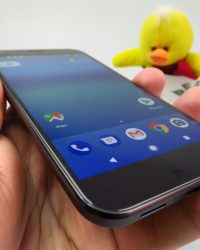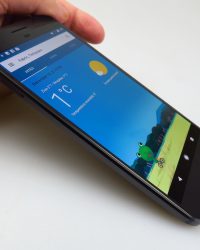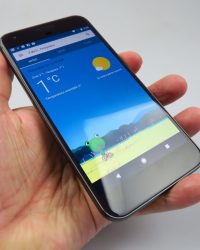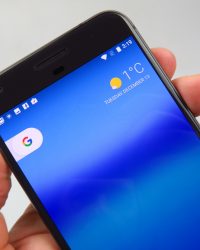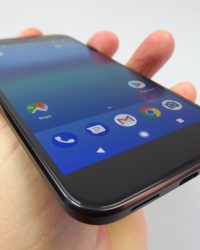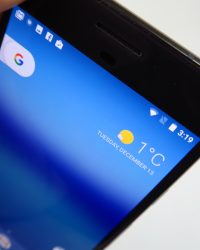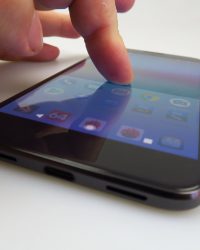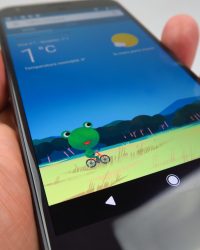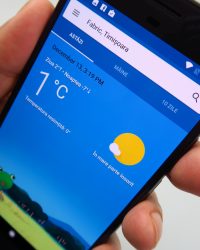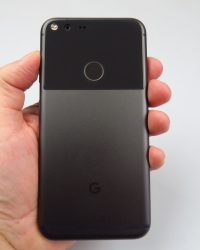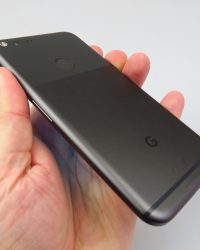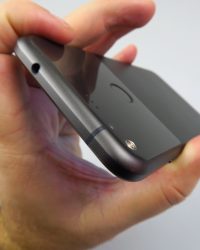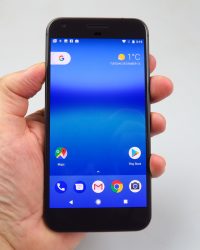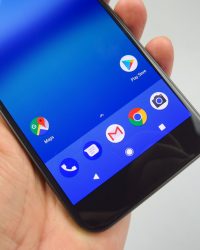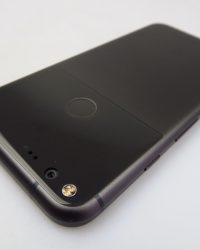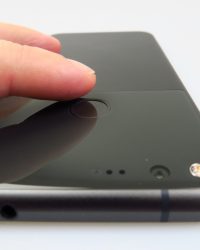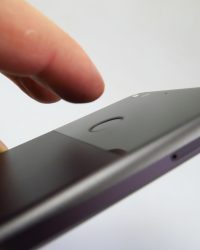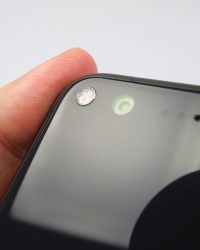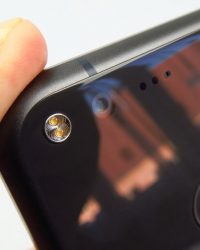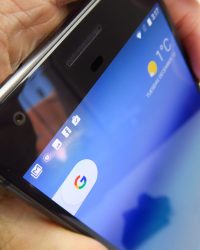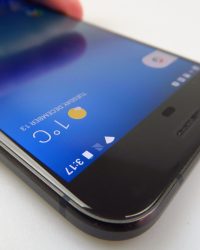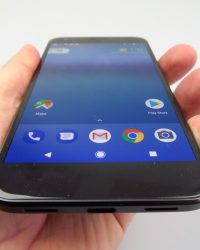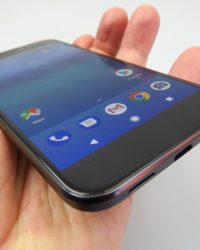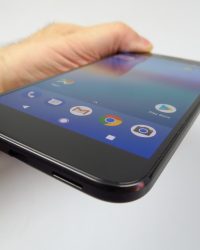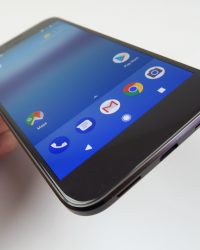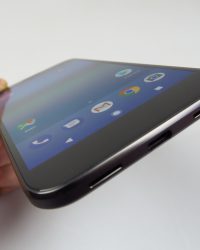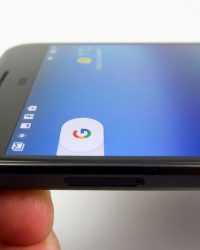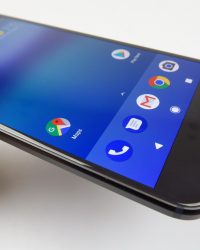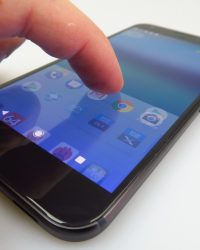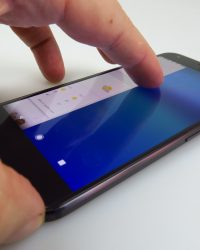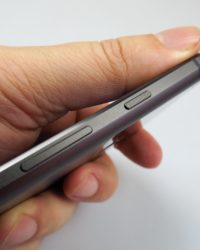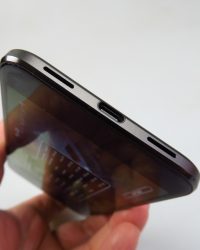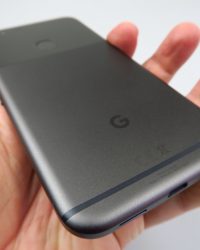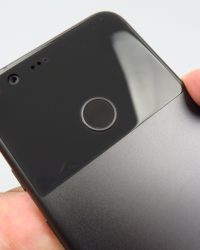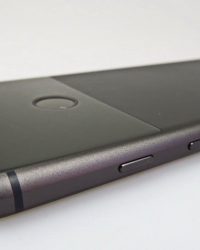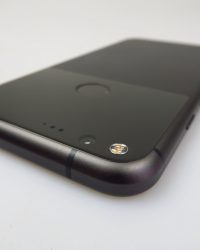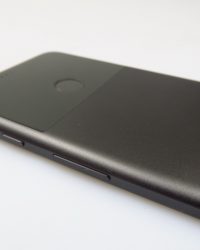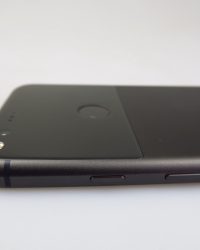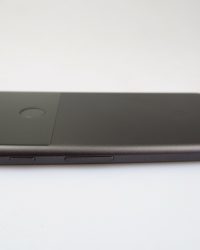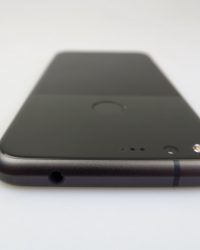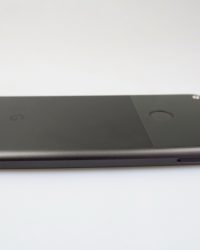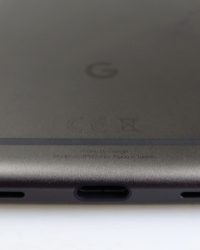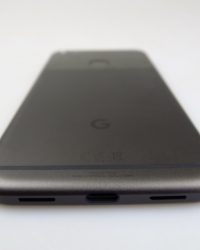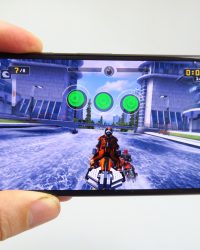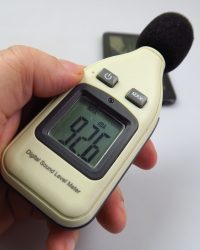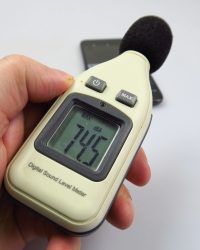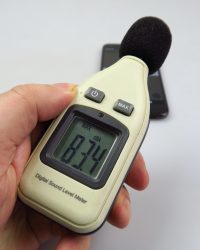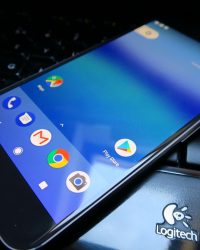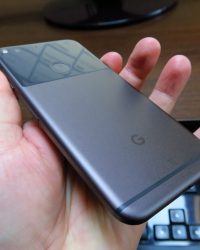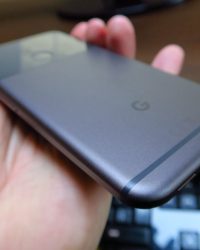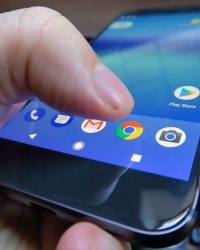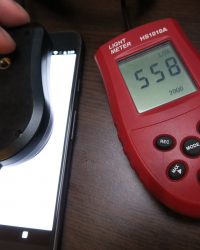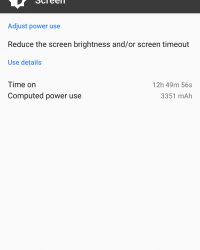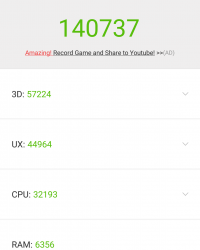Around Christmas time last year we were fortunate enough to receive a Google Pixel XL for testing and while the top 10 smartphones of 2016 was pretty much decided in our heads, this handset came and changed our perception radically. With the Nexus series done and HTC taking charge of the Pixel series, we were certainly in for a surprise, but little did we know it was going to be a good one. This phone is priced at around $769.
It debuted last fall with the Google Pixel and both are made by HTC, although their logo doesn’t appear on any of the new devices. It’s a pricey phone that was the first to come with Android 7.1 preinstalled, while LG V20 was the first to come with Android 7.0 Nougat. A metal 5.5 incher, this handset is available in unusually named hues of color like “Quite Black”, “Very Silver” or “Really Blue”.
The design is massive and metallic, but the glass panel at the back side in the camera area feels like it’s an afterthought. The edges are rounded and the 5.5 incher comes with splash and dust resistance, within the IP53 standard. It’s got a front 2.5D glass panel and measures 8.5 mm in thickness, while weighing 168 grams and while the waistline is big, the weight is reasonable, since this phone is lighter than the ASUS ZenFone 3 Deluxe for example or the LG V20.
It’s also a full 20 grams lighter than the iPhone 7 Plus, so that’s a plus. It also has the appeal of good button feedback and it took the combo of straight lines and curved edges from the HTC 10. It’s a comfy phone to hold, offers a solid build, that’s also premium. However, since it’s rather massive, it’s not very easy to use with a single hand.
We have to admit it’s not very pretty to look at and the back is a fingerprint magnet, but in the end the design is a matter of taste. The display on board is a 5.5 incher with an AMOLED panel and Quad HD resolution. There’s no video player here, so we had to use Google Photos for that purpose. The viewing experience brought us very vivid colors, deep black and good brightness and contrast.
The view angles are wide and the pixels adopt the Pentile Matrix setup. We used the luxmeter to measure the brightness of this panel and achieved 558 LUX units, which is great and places this phone on the 9th spot from all the models we’ve tested. It surpasses the Xiaomi Mi 5 and iPhone 7, but scores below the OnePlus 3 and Galaxy S7 Edge.
Settings include Adaptive Brightness, Night Light (an amber tint is triggered) and there’s also Ambient Display, that wakes up the screen when you get a notification. Font size can be set up, then there’s Display Size, used to make items bigger or smaller. Then there’s the VR option, that reduces blur and flicker with the headset attached.
Interestingly, there’s no color tweak here, which we’ve seen on a ton of phones so far. Other than that this is pretty much the perfect screen to have on a phone. Moving on to other hardware, we’ve got the Qualcomm Snapdragon 821 CPU available here, the best CPU Qualcomm has to offer right now, with 4 Kryo cores and up to 2.15 GHz clock rate.
There’s also an Adreno 530 GPU in the mix and 4 GB of LPDDR4 RAM, as well as 32 or 128 GB of storage, plus no microSD card slot, as usual for a Nexus/Pixel machine. Of the storage available here, around 7.41 GB gets used up. This has got to be the snappiest phone I’ve ever had my hands on, with no trace or hint or lag and instant response to all my actions. It totally beats the iPhone 7 and any Android phone from the past year in the area of UI fluidity.
Games run in excellent manner, also with no lag, no texture problem and looking hot. The strange thing is that benchmarks, such as Quadrant or AnTuTu don’t confirm the supremacy of the phone, possibly on account of lack of optimization. In Quadrant we placed 16th from all the models we tested, while in AnTuTu 6 we were on par with the LeEco Le Max 2 and in 3DMark Ice Storm Unlimited we started scoring better, but still 10k points below the iPhone 7.
In GeekBench 4 we claimed 4th spot. It’s one of those phones that make benchmarks feel irrelevant. We also did a temperature test and achieved 35.6 degrees Celsius after running GFXBench and 40.9 degrees after playing Riptide GP Renegade. There was no actual overheating to feel during the regular use so no problem here. On the battery front, we get a 3450 mAh unit and USB Type C fast charge, so with 15 minutes of charging you get 7 hours of mixed usage.
During our HD video playback test, we achieved 12 hours and 50 minutes, which is great and places the phone on the 10th spot all time. It surpasses the iPhone 7 and the Xiaomi Mi 5, but scores below the Galaxy S7 and iPhone SE. In PCMark the result was also solid, at 10 hours and 35 minutes, placing us 7th. While we did beat the ASUS ZenFone 3 5.5 inch version and the Galaxy S7 Edge, our score was lower only compared to the battery phones and the Xiaomi Redmi Note 3 Pro, so I’d say we’re doing fine as far as continuous usage goes.
Charging is done in 2 hours, which is OK and superior to the iPhone 7 at least. It’s inferior to the Nexus 6P though. Settings include the typical Battery Saver and Battery Optimization, basically Doze, with Doze on the Go also included. On the acoustics front, we had to resort to Google Play Music to listen to some tunes and the EQ let us tweak genre settings, on 5 channels plus we had bass boost, surround sound and I found that the speaker is quite easy to cover.
The sound was loud and clear, we had good bass and no distortion bothered us, plus the voice was solidly rendered. There were no headphones bundled with this model and I found it odd that the Nexus 6P had dual stereo speakers last year and this one only came with one. The decibelmeter test revealed a value of 83.4 dBA at both the front and back, when using our typical acoustic sample, but in the Riptide GP Renegade game we scored 92.6 dBA, an excellent result.
It’s top 5 material, being only beaten by the likes of BlackBerry Passport or LeEco Le Max 2. There’s no FM radio here, just so you know. Solid acoustics overall and now let’s see if the camera is truly a champ or not, as DxOMark claimed. Both Pixels share the same cam, a 12.3 MP unit with a 1/2.3 inch sensor, the Sony IMX378, with Exmor RS tech and 1.55 micron pixels, as well as F/2.0 aperture and PDAF.
There’s laser focus here, HDR+, dual LED flash and the front features an 8 megapixel shooter with F/2.4 aperture, an IMX179 sensor from the Nexus 5 back, which shows how far we’ve come. The camera app starts up fast, picture taking is lightning fast and the focus is actually uber fast, while zoom is fluid. Options are rather few, including the likes of Slow Motion, Panorama, Photo Sphere, Lens Blur, plus you can set up panorama resolution, burst settings and trigger HDR+ on, off or auto.
There’s a Timer, grille, white balance, flash and an exposure slider too. The lack of a shutter speed option and focus was a bit annoying. Getting to the gallery of shots we’ve taken during the day time unveils a set of shots from mid December, with an excellent HDR of a bridge, nice clarity in ALL shots and realistic colors. Not one trace of blur was spotted here and the details are excellent when zooming into those gulls.
You can also zoom into your shots on the PC and see that the details are truly excellent. Selfies are pretty solid, with great skin tone, texture and nicely rendered hair. The skin isn’t ghost white or too yellow, like I’ve seen on other phones.
The ice texture we photographed was superb and the closeups were brilliant. Focus play was great, with an alternating done between foreground and background without the smallest trace of hassle or delay. The water texture and the way it met the ice in the park were beautifully caught on camera. It’s a great camera, able to capture the gloss of objects, the texture they offer, their true brightness, composition and clarity.
It also handles dynamic range like a champ and it’s pretty much a perfect cam. Panorama has a resolution of 14.848 x 1968 pixels and I found that the indoor shots are very nice as well. DxoMark was right and this is the best camera of 2016, clearly better than the iPhone 7 Plus for example. It also beats the excellent HTC 10 and LG G5, by the way.
Low light capture offered us day-like lighting and never before seen clarity. The flash makes things kind of blue, but other than that I was very happy with the results. Street lights were rendered perfectly, but also a bit blown up at times. The texture of statues, churches, monuments and such things was perfect and the details were fantastic for night time shots.
Colors were also well calibrated and clarity was never hampered by the low lighting. Overall, the Google Pixel XL beats the champ of low light, HTC 10 and establishes itself as the new and current champion in this area. It also surpasses the Galaxy S7 and Huawei Mate 8 in the process. You simply can’t fault it. On the video capture front, we shot vids in MP4 format, Full HD resolution, at 30 FPS and with a bitrate of 22 Mbps.
We met with a good microphone, registers nice clarity, good colors and the electronic image stabilization made things very smooth, somehow smoother than what the iPhone 7 units offered with OIS. Still, we didn’t beat the excellent stabilization of the Xperia XZ. The 4K clip had a 41 Mbps bitrate and felt like a National Geographic documentary, being very crisp and crystal clear.
Colors are realistic and the slow motion we did was superb. When zooming in we met with some quality loss, but other than that we have no objection. Even with the sun directly ahead there’s no problem here and in spite of what I just said about zoom, a second test revealed that we’re doing fine even in that regard. Google Pixel XL is in the top 3 of best filming handsets out there and even the front camera does good videos, plus the microphones are solid, so it’s nifty to use during concerts.
Low light video capture was a bit foggy, we had some flicker and the sky had a blue-ish hue. The details were good and colors too, but the blue hue disappeared after a while, so that was only one instance. Clarity was just OK this time and I feel that low light vids were inferior to what the Galaxy S7 Edge and iPhone 7 Plus produced for example.
Still, this camera remains number one in the photo and video departments. Now let’s see if the other things are as top notch. The preinstalled browser available here is Chrome, that’s fast and has modest benchmarks still compared to Safari and Microsoft Edge. The keyboard is comfy, the stock one from Nougat that is and it also comes with Swype.
On the connectivity front, we’ve got a nano SIM card slot, 4G LTE support of the Category 11 (up to 600 Mbps download), WiFi a/b/g/n/ac, 2X2 MU MIMO, Bluetooth 4.2, NFC, GPS, Glonass and USB Type C. There’s also active noise cancelling with 3 mics, VoLTE and Google is now able to warn you about a spam call. The calls are loud and clear, you get good signal on this smartphone and perfect noise cancelling.
We also did a SpeedTest, achieving 364 Mbps in download on WiFi, which is excellent, plus 25 Mbps upload, also 84 Mbps in download on 4G and 44 Mbps in upload, which aren’t very impressive. When it came to discussing the OS, UI and apps we actually did a review of the Android 7.1.1 release, since we hadn’t met it with it till this phone came to us.
The Pixel XL is promised to receive OS updates for the next 2 years and security patches for 3 years. One of the main things you notice at first is the fact that long pressing on items activates a menu, like the 3D Touch from the iPhones. This time you just have to keep the screen pressed, so there’s no special pressure sensitivity. Relevant options pop up.
We also get Live Earth wallpapers from Google Earth and the app drawer now slides up from the bottom, like on the original Android, a nice throwback if you ask me. Google Now’s screen is the leftmost pane, offering the usual collection of reminders, sports scores, transport info, Home and work info, plus more suggestions, like stock, movies and weather.
The Search bar has become a G handle, next to a weather widget to its right, while multitasking is done via the usual carousel, but also via split screen. You can split the screen in two and used two apps at the same time, each of them with a resizable window. Double tapping the app switcher works like an Alt + Tab feature, switching back and forth between the last two apps, by the way.
Another revamped aspect is the dropdown section, with a new and cleaner look. Notifications are wider and better spaced, the Quick Toggles get a small line at the top and they can be expanded with a swipe. There’s Quick Reply straight from notifications and double tapping the Power button now starts the camera. OS updates will also happen in the background from now on, so there’s no more waiting.
The “app loading” thingie from the start of the device is also gone. Google Assistant is another key item here, a more ample Google Now basically and a rival for Amazon Alexa, Siri and Cortana. It can set alarms, timers, find out info about your favourite sports teams, send a text, play music, navigate or show you photos you took over the past years and were stored in Google Photos.
It can search them following a keyword like a “cat” or a person’s name even. It can calculate a route, answer math questions and carry a dialog. It’s got better understanding than Siri, but still sounds robotic. Another thing to noticed in Android 7.0 compared to its predecessor is the fact that icons are now more rounded, circular to say it better.
Settings include a Search area and a section where you can get support straight from Google. Side panels are available to switch between sub menus more easily. The fingerprint scanner has a 7 step setup, you can swipe on it to trigger menus or functions and it’s very fast and accurate when it comes to authentication. The preinstalled apps list is pretty scaled down, with 20 names included here.
Allo lets you chat with people and includes the Google Assistant in the mix, plus there’s also group convos. Other than that there’s the usual selection of Gmail, Maps, Drive, Photos and the usual Google app package. So now that all the bases are covered, it’s time to see the verdict!
Here are the Pros:
- bright screen
- perfect camera
- incredible fluidity
- great battery
- solid stabilization
- good selfies
- loud
- crazy fast Nougat and pretty improved
And the Cons:
- pricey
- massive
- back glass window is ugly
- gets a bit hot
- flash makes things blue at night
- low light videos below the rest of camera package
- speaker is easy to cover
In the end the only drawbacks here are first world problems or matters of taste, so this phone is pretty much close to perfect if you’re shopping for an Android phone. It’s the best on the market, when it comes to performance, camera, battery, selfies, audio, video. I could even go as far as to say it’s about 10 or even 15% better than an iPhone 7 Plus, dual camera or not.
At least the camera is clearly better. If the Nexus had to be sacrificed to achieve this, we welcome it with both hands. You can find the Google Pixel’s latest price here.

